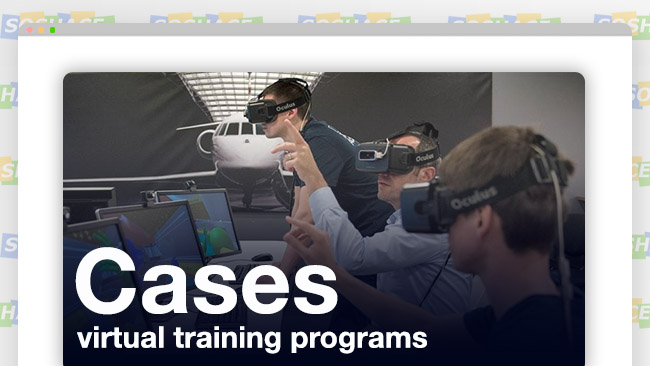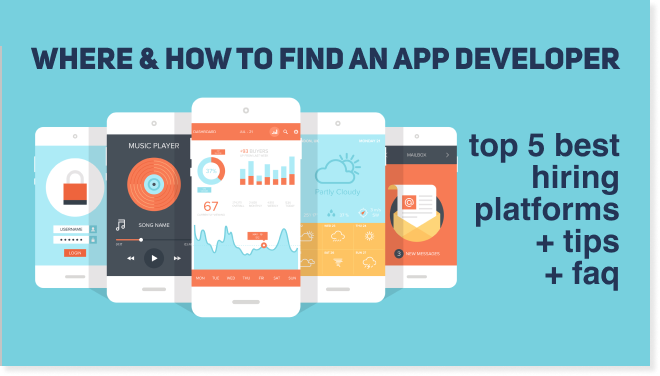
Building a dedicated remote team poses many challenges: from helping the workers feel connected to enabling them successfully manage their salary. Sometimes the number of challenges may feel overwhelming — and this is where technologies like VR and AR step in to bridge the gap between on-site and remote work. Virtual reality (VR) and augmented reality (AR) are technologies that utilize physical devices (headsets and mobile devices) to either relocate the user to a completely virtual environment or augment the way they perceive the world with virtual toolsets.
Despite the many advantages of the remote workflow, problems like member alienation and lack of physical presence at the workstation are preventing many projects from going 100% remote. As various businesses face these problems, some of them are turning to VR and AR to try and solve them.
Exploring this topic lets us see that these technologies have interesting present and fascinating future — and this is what we’d like to focus on in this article: we’ll study real use cases of VR/AR by different companies and muse over what future holds for them.
Cases: a Virtual Hub for Remote Teams

Whether it’s marketing, management, or web dev, organizing a remote team requires a rather long list of tools to manage each aspect of the working process: members need to contact each other via video- and audio calls (Google Hangouts or Skype), then communicate via text chats (Slack), then collaborate on their work files via a shared platform (Google Docs). Spatial sets an ambitious goal of replacing this entire toolset altogether.
Founded by Anand Agarawala (former member of Android and Google Photos teams) and Jinha Lee (former 3D interfaces developer for MIT, Samsung, and Microsoft), Spatial is an AR platform designed to make everyday work tasks easier. Users can attend virtual meetings and interact with the files they share in a virtual environment. Spatial scans the user’s surrounding environment via their AR headset, generates their 3D avatar — and now the user can join a virtual room with up to 15 members. The team behind the product is planning to increase the maximum amount of concurrent room users to 100 — and the valuable feedback provided by companies that’re testing Spatial (NASA, Ford X, and Microsoft) will certainly prove useful.
This service seems to finally be able to address an important issue of remote teams: lack of interaction between team members. Even though the avatars used in Spatial aren’t perfect copies of your colleagues, the feeling of satisfaction that working in a room with your team brings shouldn’t be underestimated — after all, it can drive our work motivation.
Cases: Training in VR

Retention rates coupled with performance numbers are arguably the go-to metrics for assessing a business’ effectiveness — so no wonder companies are always looking for new ways to improve them. The VR training process is proving to be successful: a study by Beijing iBokan Wisdom Mobile Internet Technology Training Institutions claims that knowledge retention is 30% higher for students who utilized VR technologies.
Noting the positive effects of these technologies, numerous Fortune 500 companies like Walmart and Boeing are adopting the technology in their training facilities: for instance, Boeing has enhanced its technicians’ workflow with AR headsets, enabling them to use 3D diagrams when working with aircraft equipment; Walmart has organized a training and education program for its remote employees via HR headsets.
Most importantly, training in VR helps employees reduce the amount and severity of errors they may make: as Greg Sullivan, Director of Communications at Microsoft Mixed Reality, puts it: Research indicates that interacting with something in three dimensions — as opposed to looking at it on a piece of paper — helps you understand the subject much more profoundly and fundamentally.
This idea is being proven by Pixo VR — a startup which shifted its focus from VR games to VR training environments designed to help firefighters and factory and construction workers train in simulated situations of extreme danger and stress. Then, they can analyze any mistakes they made — those mistakes usually lead them to their virtual deaths. This VR experience is so vivid that understanding what went wrong becomes much easier — as well as avoiding such mistakes in real-world scenarios.
Same principles can be applied to remote teams, cutting workspace-associated costs even further and benefiting from better retention rates. Moreover, we’re just one year away of finding out whether a 2014 research conducted by London Business School will turn out to be true: 34% of business executives and entrepreneurs stated that, by 2020, more than half of their full-time employees would be working remotely — and this means there would be a huge audience for remote learning solutions: web development companies, for instance, would be able to prepare their remote web developers quickly and efficiently.
Trends: Apple’s AR Developments

“Apple is an innovative company” is a polarizing statement nowadays, but one thing is for certain: we can analyze what technologies the company develops to catch the gist of where the whole tech industry is headed. After all, its main competitors are all in the VR-AR game: Microsoft HoloLens, Google Glass, HTC Vive, Facebook’s Oculus, Samsung Gear. The behemoth of technological advancement, Apple applies AR in different areas of creativity: working, playing, and learning. Having studied their workflow-related cases, we may take a look at the stage preceding work: schools and universities where the learning process is beginning to transform.
The rather unhurried adoption pace of technologies like VR and AR can be attributed to different factors: cost of the devices and computer hardware, lack of software solutions and so on; however, another important factor is the novelty of these technologies — they both feature the word “reality” in their names for a reason, as they operate with the perception of reality. This means that for many people, completely changing the way they approach their work and human-to-human interactions is just too much. This shouldn’t be the case for the next generations: as they enter the workforce, they’ll already have had vast experience with VR and AR throughout the educational system.
Capitalizing on Apple’s AR platform, app developers are offering solutions to transform an iPad into a full-fledged virtual learning hub: with apps like Complete Anatomy, WWF Free Rivers, and Froggipedia schoolchildren and students alike can, for instance, visualize anatomy of humans and frogs or place a river in a virtual landscape and study its flow. Although functionality-wise, the apps are somewhat simple, they help to convey a revolutionary idea: the way we learn (ergo work and play) shouldn’t be limited to the material world we live in; the virtual world offers greater customizability and interactivity — and the gateway to this brave new world lies in their iPad.
Apple is also advancing in the VR department: it has been purchasing VR-related companies and filing patents; this has led tech enthusiasts to speculate that the company’s working on a VR product (dubbed “Apple Glasses”). The information available on this subject is sparse and speculative, so we’d rather wait until everything is certain — and then write an article covering this device!
Technical revolutions don’t happen in a moment — they happen gradually and involve multiple paradigm shifts in different areas which may not be visible to our eyes. We believe that we’re witnessing another revolution — this time in the realm of a workflow.
Once such a revolution happens, it becomes clear that it was just bound to take place (i.e. obvious is only obvious in the retrospect). If you want to stay informed more thoroughly and learn something before other people do, our blog is a good place for that. 😉





